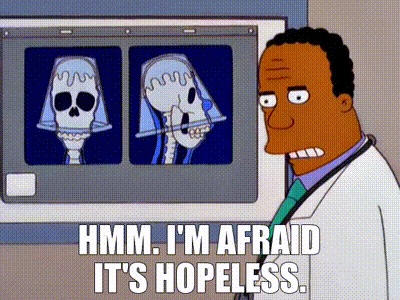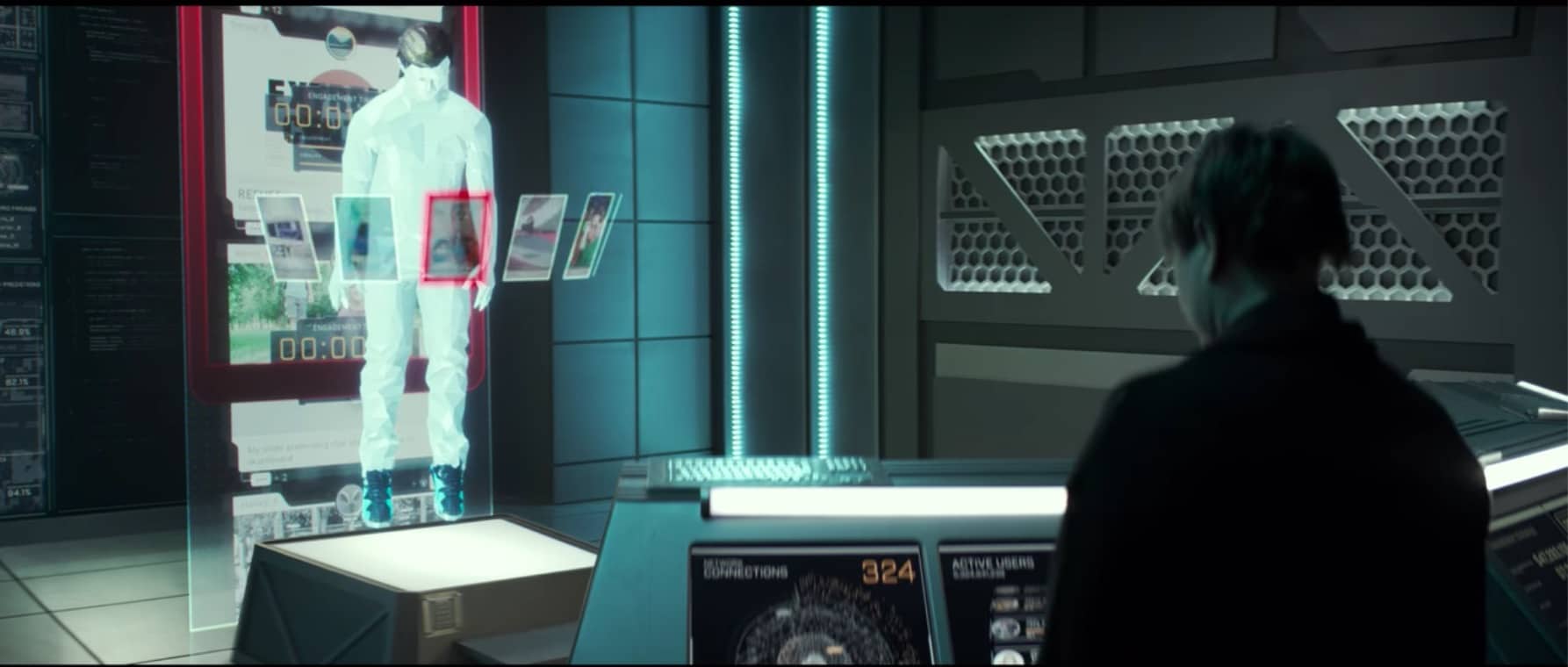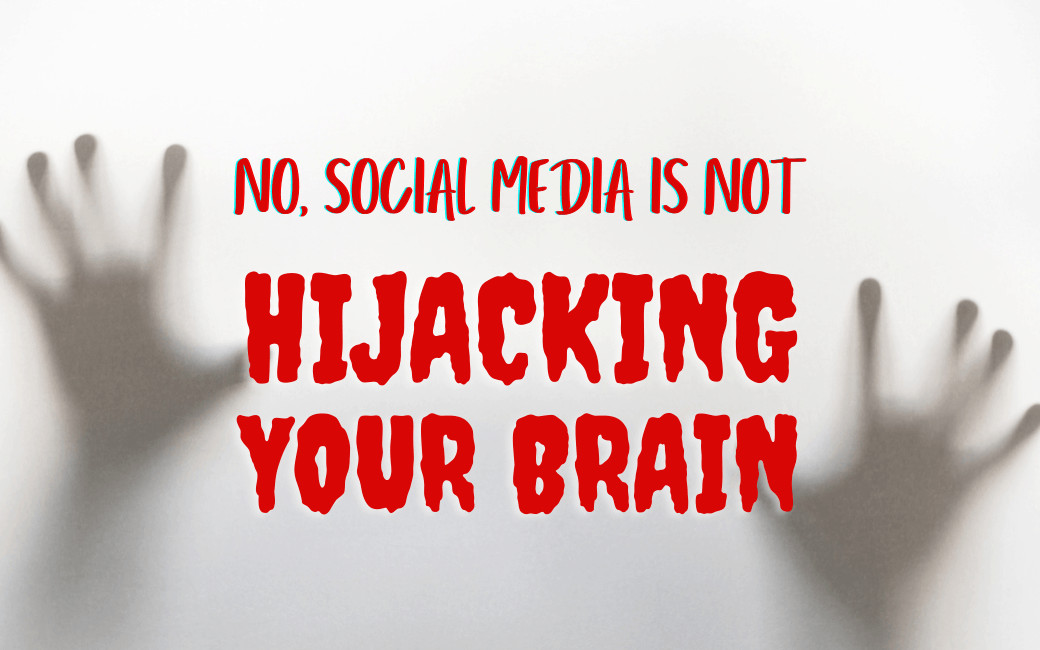Over the past few weeks, people have asked me for my review of the Netflix documentary, The Social Dilemma. It’s no surprise. One of the film’s central themes is that social media is like an addictive drug, and I wrote the book on habit-forming technologies: Hooked: How to Build Habit-Forming Products. I also have a personal connection to the film.
In August of 2018, I sat with the filmmakers for a three-hour interview. We discussed everything from the subject matter of Hooked and my second book, Indistractable, to the ethics of social-media use and how we can learn to live with the digital tools that pervade our lives. I was glad to share my perspective; it was a rich and engaging discussion.
Or, at least I thought it was. As it turned out, my commentary was excluded from the film. The filmmakers are free to do that, of course—and truthfully, this isn’t about me; it’s about people’s daily struggles with technology.
I spoke about those struggles in my interview with the filmmakers: we know that social networks and modern tools like email offer us a great deal, but we also know that we need to learn to live with them in a more sustainable way. The goal of my work, particularly of late, is figuring out how to strike that balance.
I don’t think I’m alone in this desire. In fact, I imagine that’s how the vast majority of the audience for The Social Dilemma feels. We use social networks to connect with others, but we’d like more time to disconnect from it all. We’re glad that Facebook lets us get in touch with long-lost friends and keep track of birthdays, but we’re concerned about filter bubbles, viral hate, and newsfeeds masquerading as news. We’re grateful for the instantaneous communication available through smartphones and email, but we don’t want those digital tools interrupting our efforts to communicate with our analog children and friends. In short, we value the good and want to limit the bad.
What I had hoped to see in The Social Dilemma was a sober, evidenced-based dissection of these complex realities. I was disappointed when the film instead advanced a narrative that depicted social media, YouTube, Google, and so many other tech platforms, tools, and companies as mind-controlling monoliths that are “hijacking” our brains, leaving us to do what they want with no resistance. I was also dismayed to see disregard for research that would have challenged its conclusions. Above all, I was alarmed that the film did nothing to inform its viewers what they could do to solve the problems it showcases.
Well…not exactly nothing.
As the film’s end credits begin to roll, the interviewees offer a few half-hearted solutions: delete the apps from your phone, shutter your social media accounts, and hope the government steps in to do something.
Huh?

Those of us who use these tools regularly can be forgiven for rolling our eyes. Most of us don’t want to throw the social media baby out with the bathwater, and even more of us wouldn’t trust Congress to organize a one-car parade these days.
These aren’t realistic solutions to real problems, and, while it’s impossible to measure, my bet is that very few people in the viewing audience took any action after seeing the film. How could they?
The film is the effective equivalent of going to the doctor, receiving a disturbing diagnosis, and having the same doctor shrug his shoulders when asked about the treatment. Worse, imagine if the doctor actually had helpful medicine but didn’t tell you about it because he assumed you’re too lazy or incapable to take it. That’s malpractice and it’s exactly what the filmmakers did. They knew the antidote but didn’t share it with viewers. Why would they do this? Because what I told them didn’t fit the predetermined narrative of the film.

OMG! Are we in the Matrix?!
The way the film depicts things, we’re supposed to believe that we’re powerless pawns whose minds are completely controlled by algorithms, that social networks are too big to contain or control, that their insidious tendrils have wormed their way into every corner of human life, and that they have penetrated the depths of the human brain where they manipulate people’s wills with the coercive force of mind-altering drugs.
All of this makes for riveting drama in the mold of sci-fi horror classics like Invasion of the Body Snatchers, Terminator, Alien, and Cloverfield. When we watch these films, the overall effect is a thrill-ride experience. Like a roller coaster, it’s something that feels dangerous even though in reality it’s safer than driving your kids to soccer practice. The illusion of danger makes these films entertaining. It makes The Social Dilemma entertaining as well.
There is, of course, a difference. What makes thrilling film experiences possible is an implicit agreement between us and the filmmakers—they agree to present a story that makes our hair stand on end, and we agree to ignore the ways the story skirts reality or fudges facts. The Social Dilemma’s clever twist is that we’re informed of no such agreement. It’s billed as a documentary. It’s supposed to be real. Despite that, the filmmakers use some of the same dramatic techniques as the films mentioned above. Chief among them is the illusion of being powerless.

In the film, The Social Dilemma, people are portrayed as virtual “voodoo dolls” controlled by ominous algorithms. But are we really helpless victims, or is the film manipulating our emotions to have us believe we are powerless?
Feeling powerless is one of the things that makes horror horrifying. The protagonists are powerless to fight the monsters, and we’re powerless to help them: “Don’t open the door!” “Grab the gun!” “Forget the cat, you fool!” “Run!!!” The temporary feeling of powerlessness is part of what makes horror films fun (if you’re into that kind of thing). When it’s all over, you can breathe a sigh of relief that you’re not really as powerless as you felt.
The illusion of powerlessness depends on two things: stronger-than-life monsters and weaker-than-life protagonists. Seen in this light, it’s clear why the film couldn’t present reasonable, level-headed solutions to the problems that social media poses—it would have burst the dramatic bubble the filmmakers worked so hard to create.
If social media and its close cousins really are such powerful corrupting forces, if Mark Zuckerberg and other tech-industry leaders really are canny digital Darth Vaders, if social media and its ilk really are addictive drugs that hijack the brain, you really can’t finish the story with seven nifty tips for curbing your social media intake. When the monster is so monstrous and the stakes so high, the only appropriate dramatic finish is to call in the fighter jets and missile strikes—or the legislative analogues thereof.
The Social Dilemma is good drama, but good drama can trigger bad decisions. The reality of social media and its challenges is much more mundane than the film depicts. We are not powerless, social media is not a drug, and we are not pawns—unless we want to be.
No, you’re not in the Matrix
If my research has led me to any conclusions about technology, habits, and a balanced use of social media, it’s this: you are far from powerless. In reality, you can do a lot short of killing your LinkedIn account and nuking your Instagram handle. You can learn, as dieters do, that all things in moderation can actually work better than going cold turkey, that the mean between extremes is the path of progress.
Today, there are countless ways to reclaim your time and attention and find the right balance of social-media use, including a cottage industry of tools, like apps that cleverly limit the time spent on certain websites, and movements to disconnect for periods of time. Creative technologists and designers have built products to limit tracking, defeat the temptation of watching the next video on YouTube, block Facebook’s Newsfeed, and even limit the ravages of doomscrolling and FOMO. These tools work, and there’s nothing big bad tech companies can do to reach into your device and uninstall them. We can all take action and take steps to limit distraction and the bad aspects of social media, starting right now.
Why would we wait for politicians or the tech companies to fix this for us? If you hold your breath, you’re going to suffocate.
Our ability to take action to change our circumstances gives us hope and ultimately improves our lives. But freedom is precisely what we agree to check at the cinema door when we watch a horror flick. It’s also what we’re expected to disregard when we watch The Social Dilemma whose dramatic elements cleave too closely to the horror genre to ignore.,/p>Films like this have to entertain and grab viewers, and perhaps the best way to do that is to fudge facts and go whole hog presenting a single point of view. You can quibble with that, but you can also understand the impulse—there’s a lot of great stuff on Netflix, and if you’re competing for attention with The Last Dance and The Crown, you’ve got to sell the sizzle and the steak. It’s a tough streaming world out there.
Acknowledging all that, viewer discretion is advised! If you decide to check your ability to make decisions at the door, don’t forget to pick it up again on the way out! Don’t forget that you are a powerful individual.
In a recent interview on The Ellen DeGeneres Show, Tristan Harris, the main character in The Social Dilemma, restated a theme from the film saying, “We are all, three billion of us, forced to use technology platforms that are not aligned with the public or social good.”
Again, this is good drama, but it’s a bad description of reality. In reality, we are not “forced” to use social media. Even if we acknowledge that these services are valuable—even essential—for accomplishing various tasks, no one is forcing us to use them in excess or even in the way social-media executives intend.
The film is right that there are tech companies (including Netflix) that want to influence what you think, how you feel, and what you do. Ironically, they relish the metaphor that some people are “addicted to technology” the way others are addicted to drugs, and would love for you to buy into the illusion that you’re powerless to resist their content. Why? Because they know that when people think there’s nothing they can do about a problem, they stop trying to fix it. In psychology, this principle is called “learned helplessness.”
If you’re convinced you’re powerless to combat a sinister technology seeking to colonize your life, you’ll stay plugged in, waiting in vain for your senator to fix the problem. In reality, you could be fixing the problem yourself much more quickly and effectively. You could be taking steps to moderate your social-media use and teaching your children to do the same.
Is it effortless? No. It’s hard to hear your kids whining for more time online and it’s not always easy to stop scrolling sometimes. I get it. I’ve been there too. But like many good things in life, it’s worth the work. We can do this if we try. The trouble is, brainwashed by the disempowering message in The Social Dilemma, many people won’t even take the first step. “Why bother if it’s hopeless?,” they think.
Hacking Back Against Big Tech
If social media companies are indeed trying to “hack” our attention, who says we can’t hack back? Nothing prevents us from taking action right now to curb our social-media use except our own willingness to do nothing.
My hope is that viewers who finish the film and who are concerned about the effects of social networks explore real solutions.
One answer—the one that’s worked for me and I shared in detail with the filmmakers—is becoming indistractable. I call this the skill of the century, because it empowers you to take control of your attention and your life without having to beg for mercy from the tech giants. I embarked on my research and developed this method to solve my own problems with distraction, and you can use what I’ve learned to take action in your own life.
First realize that you’re more powerful than you think. Specifically, you’re more powerful than the technology you’re using.
How do I know? Because I literally wrote the book on how social media gets you hooked. Hooked: How to Build Habit-Forming Products was published in 2014, and it reveals the psychology behind Silicon Valley’s most sticky products. I know all their tricks, and I can tell you with assurance, these tactics are good, but they’re not THAT good.
Rather than The Matrix, a better film analog might be Indiana Jones. Think of the scene where Indiana is confronted by his sword-wielding nemesis. The swordsman’s skills and tricks are intimidating. But rather than getting overwhelmed with fear, all our hero has to do is remember he’s not powerless, take out his revolver, and shoot. Bang! Problem solved.
Like Indiana Jones, we’re far more powerful than the tech companies, despite their persuasive tricks.
Here are a few of the powers you have:
The power to master internal triggers
What really prompts you to compulsively look at your phone, or scroll a social media feed?
If you think about it for a moment, you’ll realize the trigger isn’t just what’s on your phone but also what’s on your mind. Our behaviors are not only triggered by external triggers, like pings, dings, and rings, but also by internal triggers like feeling bored, lonely, anxious, or stressed.
Whether the distraction is too much booze, news, food, or Facebook, the root cause is the same: a desire to escape emotional discomfort. It’s called an internal trigger, and when we understand the source of our need for psychological escape, we can do something about it.
I’m a fan of the methods developed by Dr. Jonathan Bricker of the Fred Hutchinson Cancer Research Center in Seattle. It’s a set of steps you can take to deal with internal triggers that can lead you astray, like the temptation to check social media when you decided to do something else. Here are the broad strokes:
- Identify the feeling or thought behind your urge: When you find yourself on the brink of distraction, find the internal trigger that is prompting you to do so. Are you feeling anxious, restless, maybe even poorly qualified for the task?
- Write it down: Bricker advises that you write down that feeling, along with the time of day and what you were doing when you felt that internal trigger. Keeping a log of distractions will help you link behaviors with their internal triggers. The better you become at noticing the thoughts and feelings that precede certain behaviors, the better you will become at managing them over time.
- Explore the sensation: Bricker advises getting curious about the sensations that precede distraction. Do you get butterflies in your stomach? A tightening in your chest? Bricker recommends that you stay with that feeling before following your impulse. He recommends trying the “leaves on a stream” method. Imagine yourself beside a stream, on which leaves gently float by. Place each thought and negative feeling in your mind on one leaf and watch them float away.
This technique, which hinges on acknowledging the trigger, works not only for digital distraction, but also for smoking cessation. In fact, developing mindfulness of the internal triggers that cause people to reach for a cigarette is one of the most effective approaches to this problem. If it can work for something as addictive as nicotine, it can certainly work for frivolous apps. Afterall, app use is a behavior, not a substance entering the bloodstream.
As a way to start mastering internal triggers, I suggest the 10-minute rule. When you get tempted by a distraction, tell yourself, “I can give in to that distraction in just 10 minutes. Just 10 minutes.” For example, the next time you feel the urge to check Twitter, set a timer for 10 minutes, and don’t touch Twitter until the timer is up. During those 10 minutes, use Bricker’s techniques to surf the urge.
If after 10 minutes you still feel the urge, then go right ahead. However, you’ll likely be surprised to find that when the time is up, you won’t feel the urge anymore. That’s because these internal triggers are, by nature, ephemeral. They come and go in short-lived waves. Once you recognize this, you’ll be surprised at how easy it is to ride out the wave like a surfer on a surfboard.
The power to make time for what really matters
We should be stingy with our time. This means deliberately making time for the things you say you want to focus on, like family, friends, hobbies—whatever you value.
Many top performers use a technique called timeboxing to do exactly this. Down to the minute, they know how they’re going to be spending their time. If 5:00pm to 7:00pm is family time, it’s listed as such on their calendars. Doing anything besides that is a distraction, because they’ve already decided family time is what really matters.
If spending time catching up with friends over social media is consistent with your values, schedule time for that too. Love playing video games? Great! Make time for it on your calendar as well. The time you plan to waste is not wasted time.
If you’ve never done it before, building your values into your schedule could be the most life-changing thing you do today. Here’s a complete guide to building your own timeboxed schedule.
Remember, you can’t call something a distraction unless you know what it distracted you from. Everything is a distraction if you don’t decide in advance how you want to spend your time. There’s nothing wrong with spending time online as long as you spend it according to your schedule and your values, not the tech company’s.
The power to remove external triggers
Once you’ve done the preliminary work of figuring out how you will deal with your internal triggers and turned your values into time, you have the power to purge pesky external triggers—those distracting pings and dings—from your life.
Ironically, it’s in our work environments that we’re often the most distracted from doing our work. Notifications are a big part of this. So, take a good look at the notifications that you have activated, both on your phone and on your computer. How many interruptions do you have during the day? Are they all necessary? Probably not. In just a few minutes, you can change your notification settings so the technology serves you instead of you serving it.
We can also use tech to fight tech distraction and, like adjusting our notification settings, there’s nothing Zuckerberg or any of the other social media CEOs can do about it. Here are a few free technologies to help you hack back digital distraction:
- SelfControl: I use this app every day and recommend it to everyone. It helps you block out distracting websites when you want to stay focused.
- News Feed Eradicator for Facebook: This free browser extension does exactly what it says: it makes your News Feed disappear, so you can use the best of Facebook without getting pulled into the content vortex. You can do the same with almost any social network, including Twitter, LinkedIn, and Instagram, with the countless apps out there to help.
- Distraction Free for YouTube: This is another free browser extension that scrubs ads and recommended videos from YouTube, so you watch only what you intended to watch.
The power to make pacts that prevent distraction
Finally, the last step to becoming indistractable is to prevent distraction with pacts. A pact is a decision you cement well in advance of the temptations that might come.
There are three types of pacts:
An effort pact is a kind of precommitment that involves increasing the amount of effort required to do something you don’t want to do. Effort pacts work by forcing you to ask, “Is this really worth it?”
For instance, in my household, we use an outlet timer to turn off our internet router every night at 10 pm. Of course, if I really wanted to, I could find a way to turn it back on, but that would require extra effort. The brief pause to consider whether I’d prefer to go to bed with my wife, versus scrolling social media, is enough to remind me of what’s really important.
A price pact puts money on the line. I recommend making a pact with an “accountability partner.” This means if you get distracted and fail to do what you said you’d do, you’ll have to hand over some amount of money to that person. This is another technique that has superb results in smoking cessation studies and can be adapted to help prevent us from getting distracted by our devices.
Finally, an identity pact is one of the most powerful ways to overcome distraction. By encoding your values into your self-assigned identity, you can empower yourself to make decisions based on who you believe you are. For example, people who call themselves “vegetarians” don’t have to expend much willpower to avoid eating meat. It’s just who they are, so it’s what they do.
I have an identity pact that’s free for you to use, if you want to join me. Instead of telling yourself you’re a person with a “short attention span” or an “addictive personality,” tell yourself, “I am indistractable.”
If you tell yourself you’re the kind of person who is easily distracted, it instantly becomes true. If you think the tech companies have turned you and your kids into “virtual voodoo dolls,” you’ll be right. However, if you believe that you are indistractable, you claim the power over your life that is rightfully yours.
Believe in your agency
We have the power to control our tech habits, but only if we believe we can. If we believe we’re not in control, we’re doomed before we start. Why try if we’re convinced the algorithms are more powerful than we are? Why have conversations with our children and coworkers if movies like The Social Dilemma tell us it’s pointless?
Those conversations aren’t pointless, they’re critical. Don’t let filmmakers, tech companies, or anyone else rob you of this freedom. You have a choice, if you want it. You can be indistractable.
Related Articles
- Schedule Maker: a Google Sheet to Plan Your Week
- Habit Tracker Template in Google Sheets
- The Ultimate Core Values List: Your Guide to Personal Growth
- Timeboxing: Why It Works and How to Get Started in 2024
- An Illustrated Guide to the 4 Types of Liars
- Hyperbolic Discounting: Why You Make Terrible Life Choices
- Happiness Hack: This One Ritual Made Me Much Happier

